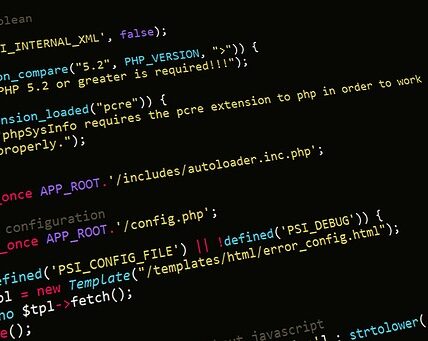Have you ever wondered how React’s virtual DOM functions, or what advantages it can bring to the development of web applications? How is it different from traditional DOM updates? What attributes give it a big influence on the layout of modern user interfaces?
The use of the virtual DOM has become commonplace in modern web development, particularly in the React library. To work correctly, it needs to make fast updates to the DOM and efficiently optimize memory usage. Traditional DOM operations could be quite extensive in terms of processing power, memory, and time, making them difficult to optimize as application complexity increased [1]. Furthermore, they were limited in scope, as they couldn’t allow multiple views of the same application without extra memory depletion. [2] This need sparked the development of the virtual DOM, which became a necessary tool for efficient data handling.
In this article, you will learn how React’s virtual DOM functions, its advantages in comparison with traditional DOM updates and how it interacts with React components. We will also take a closer look at how React’s virtual DOM optimizes the process of updating your application’s views.
Finally, we will take a look at how other libraries have adopted virtual DOM techniques, and how the virtual DOM has become the norm in web development.
Definitions
The virtual DOM (VDOM) is a programming concept utilized by modern web frameworks such as React. It is a method for keeping track of changes and updates to the user interface, allowing developers to optimize the rendering of web pages and mobile applications. The VDOM allows developers to write code that is “declarative” rather than “imperative”. Instead of having to track every change and update, developers can simply write a “declaration” that describes a given state, which is then used to generate the actual VDOM tree.
React is a JavaScript library developed by Facebook for building user interfaces. It is a component-based library, meaning that developers separate their app into components that can easily be reused multiple times in different contexts. React uses the VDOM to create and manage the components that comprise a UI.
Virtual DOM is a programming abstraction used by React to track changes to the user interface without needing to directly manipulate the DOM (document object model) tree. Instead of having to manually figure out the correct instructions to make a change, React just stores the “declaration” in the form of a VDOM. By simply updating the VDOM, React automatically knows what changes need to be rendered on the page.
Declarative Code is code that is written to describe a given state, rather than detailing out how to achieve it. By writing declarative code, developers can focus on simply declaring the desired state without worrying about how to update the DOM tree. React makes use of declarative code by accepting simple statements in the form of a VDOM and automatically translating them into the appropriate DOM updates.
Optimization is the process of making an application faster and more efficient. React uses the VDOM to optimize how updates are performed, allowing developers to render faster changes with less code. This can improve overall performance and reduce the need for manual optimization.
What Is React’s Virtual DOM?
What Is React’s Virtual DOM?
React’s virtual DOM is a technology developed by Facebook as part of the React Javascript library. It enables the development of highly dynamic user interface (UI) components through an efficient updating process, as well as providing a comprehensive framework for creating reactive web applications. The virtual DOM makes use of the concept of a “Virtual Node” to represent any UI component in the HTML DOM that has been changed.
Virtual Node Representation
A Virtual Node is an object-oriented representation of a DOM node such as an HTML div, section, header, etc. The Virtual Node also contains a component tree structure with the individual components of the UI, such as elements, attributes, and styles, as attributes of this virtual node. When a UI component changes, its Virtual Node is recreated by an algorithm so that the new element, attributes, and styles are accurately applied to create the new component.
Update Process
React’s virtual DOM performs the complex update process very efficiently. Whenever a UI component is changed, the component tree of the Virtual Node is compared to the actual DOM tree to identify which elements have been changed. These changed elements are then recreated and applied to the actual DOM in order for the changes to be visible. This process helps improve performance significantly by cutting down computation time and reducing the number of DOM manipulations that must be done.
Benefits of React’s Virtual DOM
React’s virtual DOM provides several benefits to application developers, including:
- Faster update process- By eliminating DOM manipulations, the update process is significantly faster than traditional approaches.
- Ease of use- React’s Virtual Node model enables developers to quickly and easily create dynamic UI components.
- Comprehensive framework- React provides a comprehensive set of APIs for creating reactive web applications.
Overall, React’s virtual DOM is an incredibly powerful and efficient technology and forms a crucial part of the React development framework. By leveraging the Virtual Node model and performing efficient updates, developers can create dynamic web applications with relatively little effort.
Advantages of the Virtual DOM
The virtual DOM is a revolutionary programming technique used by many modern web applications. It allows developers to create an abstract representation of the user interface (UI) and constantly keep it up-to-date with the actual page.
The React library is arguably the most popular and widely used implementation of the virtual DOM. React utilizes a diffing algorithm to efficiently update the virtual DOM with the most recent changes.
Benefits of the Virtual DOM
The virtual DOM offers several advantages over traditional web development. For starters, it increases web application performance by avoiding redundant DOM operations. The virtual DOM selectively decides which part of the page needs to be re-rendered when changes are made, leading to fewer operations than if the actual DOM was being updated.
It’s also easier and faster for developers to write code in the virtual DOM versus the traditional DOM. The React library works with JavaScript, which is already familiar to most web developers. This makes it simpler to implement complex UIs without having to write extensive DOM traversal code.
Improved Performance and Scalability
Using the virtual DOM makes it easier to scale web applications. Performance improvements, such as reducing the number of DOM operations, increase the scalability of the web application. Additionally, the speed of development increases as developers do not have to worry about writing extra code.
React also has the ability to isolate components with the help of the virtual DOM. This leads to even greater scalability as the application grows in size and complexity. Code can be reused throughout the app with the help of React’s components.
In summary, the virtual DOM offers developers several advantages over traditional web development techniques. It improves application performance and scalability, and allows developers to write code more quickly. React is the most popular implementation of the virtual DOM and it’s easy to understand why.
Implementation of Virtual DOM in React
React’s virtual DOM (VDOM) is a programming concept that provides an efficient way for developers to manipulate the interface of applications built with JavaScript. In React, the virtual DOM is a JavaScript object representation of the actual DOM. It provides an efficient way for React to detect and apply changes in the DOM, without having to actually modify the DOM. This results in quicker page renderings, improved performance, and better user experience.
How React’s Virtual DOM Works
The virtual DOM processes and records changes to the actual DOM, and then updates only the parts of the DOM that have been modified. React determines which parts of the DOM have been modified and then updates only those specific parts, rather than updating the entire DOM. This provides developers with a fast and efficient way to create interactive web applications.
Creating Elements and Components
The React framework uses a virtual node system, which allows developers to create elements and components that can be manipulated using React’s built-in JSX syntax. This facilitates an efficient and intuitive way to create intuitive web interactions. React also provides a library of pre-built components which can be reused and easily customized.
Updating and Rendering
When a change occurs in the virtual DOM, React will update the actual DOM only where the change took place. This allows React to efficiently compute updates and render them on the screen. It also ensures that changes are applied consistently across platforms and devices.
Benefits of The Virtual DOM
The virtual DOM offers a series of benefits for web development. Virtual DOM updates are faster and less prone to errors than direct manipulations of the DOM. React’s virtual DOM also offers better scalability and improved performance, which helps developers create high-quality, maintainable websites with fewer resources.
React’s virtual DOM has revolutionized web development by providing developers with a fast, efficient way to manipulate the DOM. It offers developers a straightforward way to create dynamic user interfaces, while also ensuring consistent performance across multiple devices and platforms. By utilizing its virtual DOM system, React has provided developers with an easier way to create interactive websites.
Conclusion
Thought-provoking question: How much of an impact has React’s virtual DOM had on modern web development?
React’s virtual DOM has brought a revolution to web development like no other technology has. By bridging the gap between the DOM and the current state of the application, developers can create a faster and more efficient user experience. To get the most out of this technology, it is important to stay up to date with the latest releases. Regularly check in on React’s blog and be sure to watch out for any upcoming updates.
For readers who are new to React’s virtual DOM, here’s a helpful FAQ section to get you up to speed: What is a virtual DOM? A virtual DOM is a virtual representation of a DOM (Document Object Model), and it allows developers to write easier-to-understand code which is quicker to execute. What are the benefits of using React’s virtual DOM? React’s virtual DOM provides developers with lower memory usage, faster update speeds, and improved debugging capabilities. How does React’s virtual DOM compare to other approaches? React’s virtual DOM provides a more modern approach, by greatly simplifying the process of DOM manipulation. This means that developers can focus on the details of the project rather than the underlying APIs. How do I communicate with the virtual DOM? React’s virtual DOM is connected to a web-based component library, and developers can create custom elements to communicate with virtual DOM objects. Are there any tools available to help with working with the virtual DOM? Yes, there are a number of tools available for working with the virtual DOM, such as PostCSS and Jest, which provide a range of features to help developers speed up the process of creating web applications.
By tackling the challenge of DOM manipulation, React’s Virtual DOM has drastically improved web development today. And with the continued development of this technology, the possibilities are endless.




